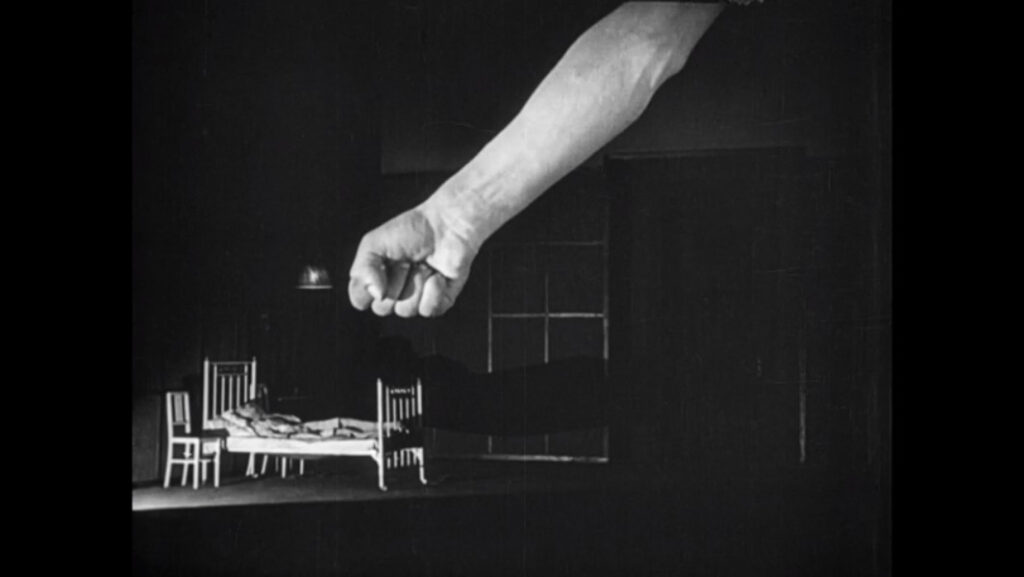
Horror has always been a genre tremendously suited for exploring the inner machinations of human desire and morality. Two cinematic adaptations of Maurice Renard’s 1920 novel, Robert Wiene’s 1924 The Hands of Orlac and Karl Freund’s Mad Love, explore this in a tale of a concert pianist receiving a hand transplant from a recently executed murderer after a train accident.
The Hands of Orlac benefits from both Wiene, best known for his iconic The Cabinet of Dr. Caligari, and Conrad Veidt, bringing haunting imagery and a fine performance to the film. Finding out his restructured hands are not his but that of a knife-throwing murderer, Orlac descends into madness, consumed by the hauntings his new hands unleash on his physique.
Wiene uses some striking visuals to represent Orlac’s psychological state. Shortly after his operation and learning about the owner of his new hands, a super-imposed hand hovers above his bed reaching out to grab him (much like Lois Weber’s hand of poverty in Shoes). Stylized shadows and impressive architecture on the film’s sets add an extra dimension of creepiness in Wiene’s signature German Expressionist style.
Fellow German Karl Freund adapted the story in an American setting with Peter Lorre playing the mad Dr. Gogol and Colin Clive Stephen Orlac in Mad Love. The doctor plays a much bigger role in this film as the obsessed admirer and lover of Yvonne Orlac, the wife of Stephen. Dr. Gogol only operates on Stephen at Yvonne’s behest, hoping that by saving her lover he might regain trust and somehow win Yvonne over.
Mad Love focuses less on Orlac’s tormented mental state than The Hands of Orlac, centering the film around Dr. Gogol’s tortured, obsessive love. The film opens with Dr. Gogol first meeting Yvonne after attending almost fifty straight performances of her play. Still madly in love with Yvonne despite her marriage and rejection of his advances, Dr. Gogol quickly discovers after the operation how he can manipulate the cursed hands to land Orlac in jail or the electric chair, leaving Yvonne all to himself.
Mad Love, running at a quick 68 minutes, leaves us with many questions unresolved. The film seems more interested in Dr. Gogol’s moral shortcomings than Orlac’s struggle with his inherently evil hands. After Dr. Gogol’s demise, Stephen and Yvonne reunite as the film foreshadows a pleasant ending for the couple; yet, Stephen still has the hands of a murderer that compels him to kill during flashes of rage. Is the film suggesting the hands themselves are not evil as much as a device for Dr. Gogol to mete out his revenge?
The Hands of Orlac is much clearer, suggesting that Veidt’s Orlac only imagined the maniacal power his new hands played on his mind. As the doctor points out early on in the film, although Paul Orlac doesn’t listen, “The hands don’t rule the person… the head and the heart lead the body… and command the hands”.
Much like Dr. Jekyll’s potion transforming him into his debased alter ego Mr. Hyde, The Hands of Orlac suggests that the hands merely awakened repressed evil already present in Orlac and that each of us is vulnerable to such psychological manipulation. Orlac’s new hands are not cursed but instead are merely a device to awaken hidden wells of anger and bloodlust.
Such is not the case in Mad Love. The murderers’ transplanted hands are inherently cursed, carrying their original owner’s murderous tendencies and his skilled knife-throwing. While The Hands or Orlac only shows Orlac’s personal anguish and internal state of mind, Mad Love shows us Stephen Orlac’s newfound knife-throwing skills and violent outbursts of anger.
Dr. Gogol might be taking advantage of the Orlac’s situation but the hands themselves are inherently evil. Can Orlac learn to control and tame his new hands? The film is not clear, although a happy ending suggests it might be possible without Dr. Gogol lurking behind the scenes.
Watching both films together makes them even more rewarding, giving us the tale with a fresh lens in each. The Hands of Orlac questions how the beast within can be awoken by psychological trauma while Mad Love explores how even the basic feelings of human desire can be twisted in a murderous, destructive, all-consuming rage.
Despite their differences in adapting the same novel, both films show that the beast within might be lurking in all of us waiting for a chance to pounce. And perhaps, even more so than a pair of cursed hands or an envious, mad scientist, that is the scariest horror of them all.
This post is part of the Classic Movie Blog Association‘s The Blogathon & the Beast Event. Visit the blogathon’s main page for more posts from other great bloggers exploring everything from classic monster movies to Hitchcock’s Vertigo.

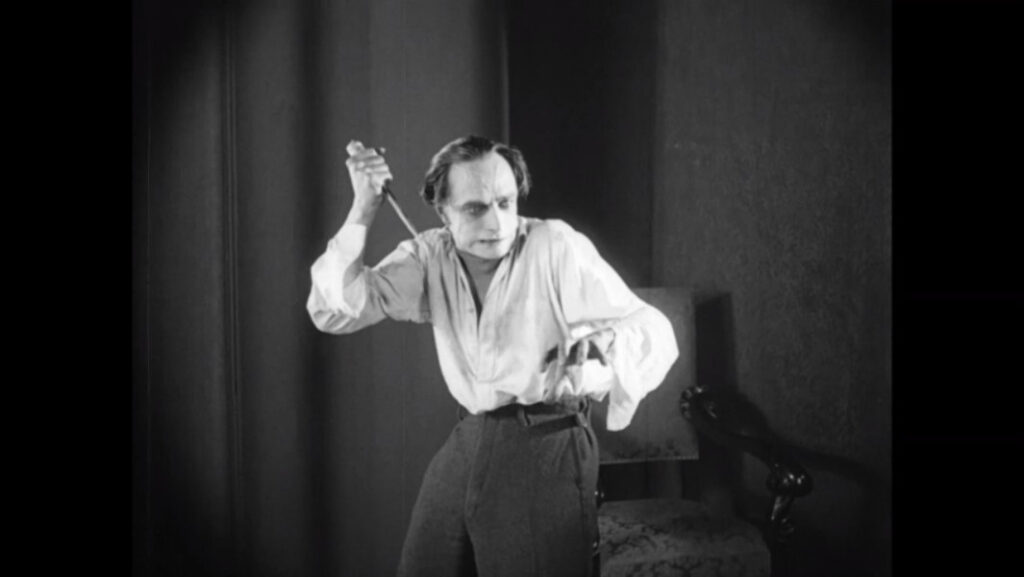
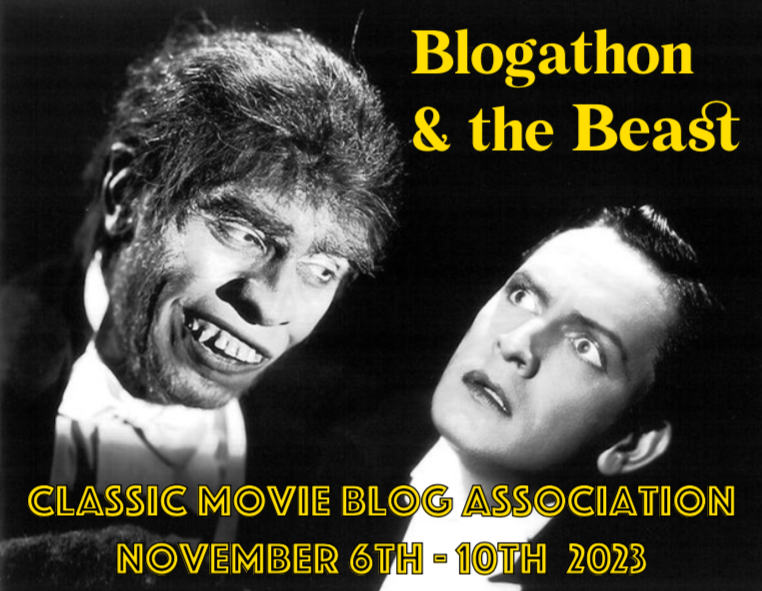
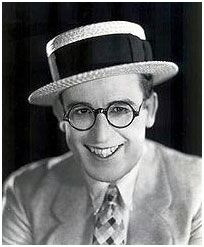

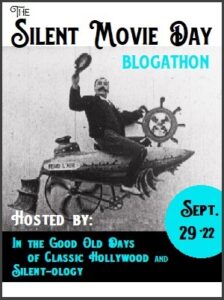
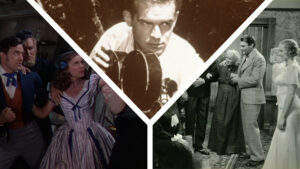
What a great idea, to watch both films together and compare. I haven’t seen either one, but you’ve sold me on both. There’ll be an Orlac/Mad Love marathon in our house soon!
The casting in the both sounds superb.
Also great that Mad Love is only 70 minutes so perfect for a double bill!
I enjoyed reading your piece, particularly how you looked at both films comparatively. each showcase two of the most evocative actors like Lorre and Veidt (two of my favorites), who are quite capable of invoking the lurking darker desires within, even if one powerful impulse is perhaps channeled through a pair hands – disembodied of a sort! Fantastic addition to Blogathon & the Beast. Cheers, Joey
I’ve seen neither one of these films, but both have always been on my radar. Somehow, I’ve never gotten around to them. Both feature performers who certainly know how to send a chill up the spine and your article makes the case for a fine – and frightful – double feature.